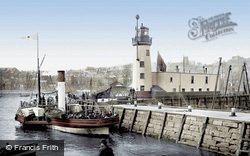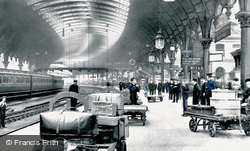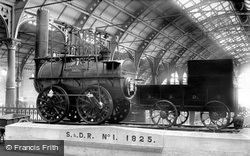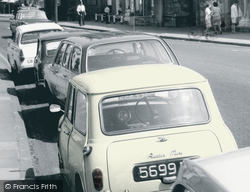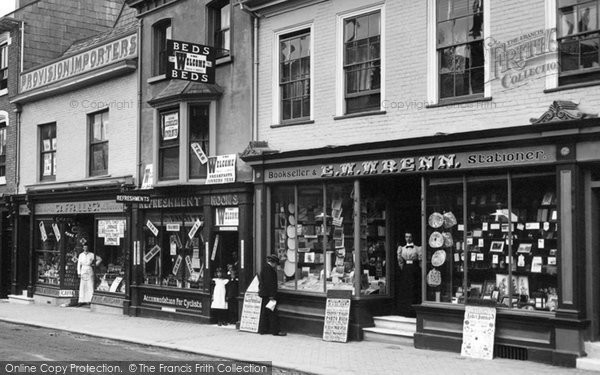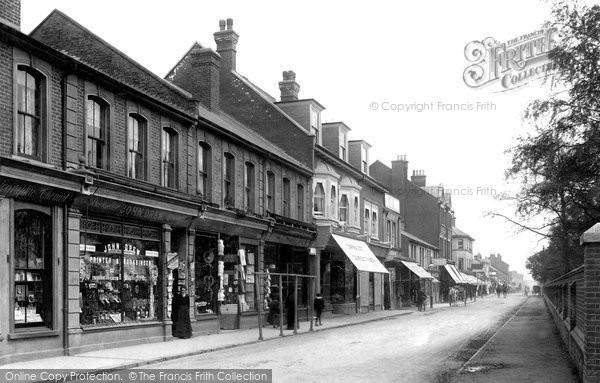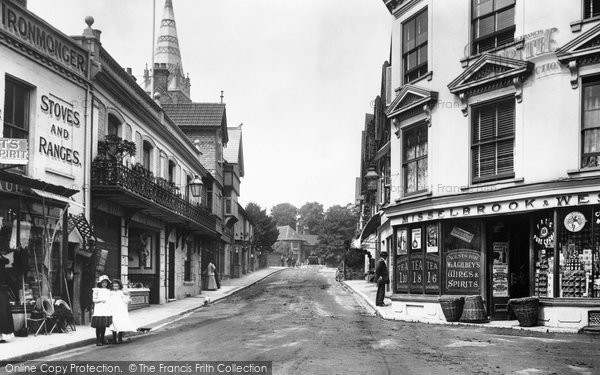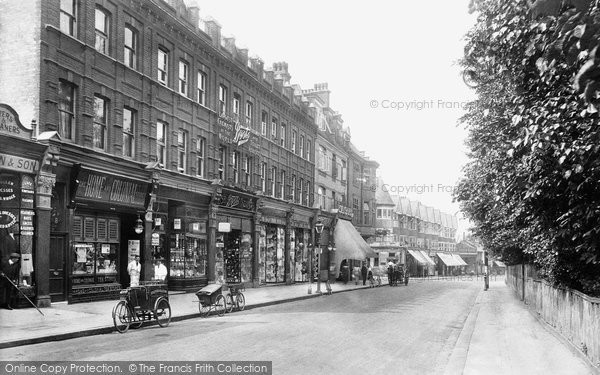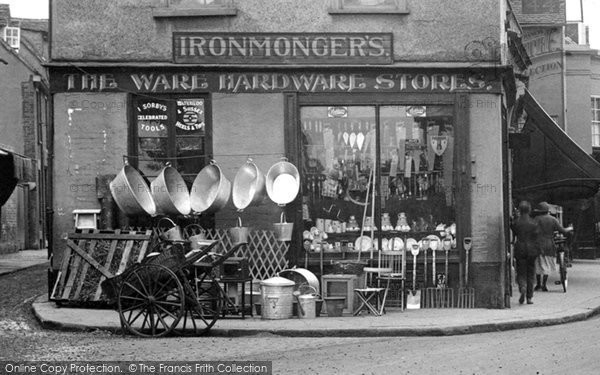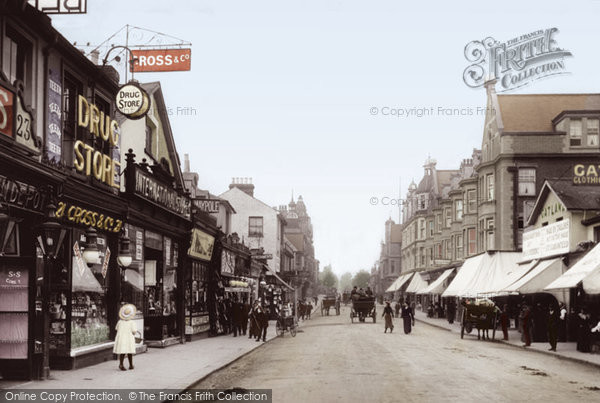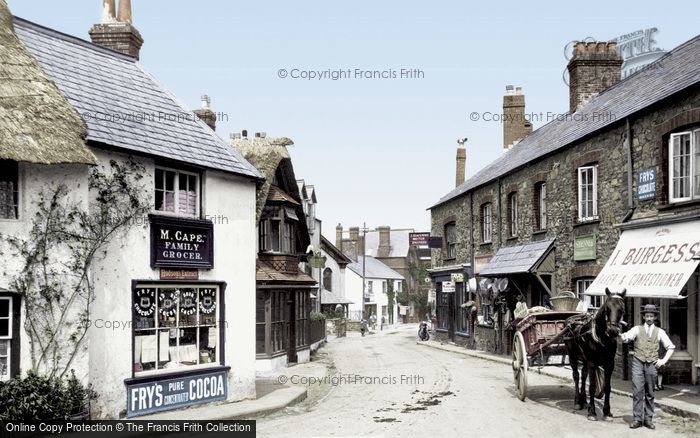Open For Business
Published on
May 13th, 2021
"The maxim of the British people is ‘Business as Usual’.”
Sir Winston Churchill (1874-1965) during the Second World War.
As Britain gradually emerges from lock down and we hope that everyday business will soon resume as usual, we bring you this selection of nostalgic photographs of shop fronts from The Francis Frith Collection, to celebrate being ‘Open for Business’!
The wetlands of the Somerset levels have a long tradition as a major willow growing and basket making area, and the baskets seen in the window of The Devon and Somerset Stores in this view of the county town of Taunton were very probably made locally.
William Wrenn had only just arrived in Alton when this picture of his shop, on the right, was taken. He was a bookseller and stationer, and in 1904 he advertised his subscription library and souvenirs of Alton.
The arrival of the Army to Farnborough in 1854 greatly influenced development of the commercial centre of the town. In Lynchford Road the street was predominately one-sided, with shops on the opposite side of the road facing the military barracks, ready to maximise their profits.
Misselbrook and Weston’s provision store offers every grocery product the discerning customer could desire, with their window advertising New Zealand lamb – ‘choicest quality from the world’s finest pastures’. A hay rake, coal-scuttles and an assortment of piping and rope adorn the shop window of the ironmonger across the road.
The awnings are up, so it must be a sweltering summer’s day. On the right, it looks like Mr Buck the wholesale dealer is calling at St George’s Hall, the china and glass emporium.
At the time this photograph was taken, Ulverston was still a busy commercial port linked
to the River Leven by the mile-long Ulverston Canal, England’s shortest. It exported
copper, iron, slate, barley, bobbins, gunpowder and leather all over the Empire.
Here we see the local premises of the Home & Colonial chain store, now sadly departed, which by this date had several hundred branches. Their pricing policy was aggressive: signs in the window proclaim ‘2d in the shilling returned’. This photograph is a reminder of the days when fascia lettering reflected a firm’s pride in itself and its products.
This looks like just the sort of store in which the famous “Four Candles/Fork Handles” sketch by the television comedy duo ‘The Two Ronnies’ could have taken place for real.
This bustling scene captures the brash, commercial spirit of this town in the Edwardian period, with a welter of advertising and shop display signs along the left-hand side of the street. Cross’s Drug Store makes a feature of its sale of Bovril and teeth, and the Empress Tea Stores has a roof-top sign advertising the well-known brand of Maypole tea.
This photograph shows Isaac Burgess standing beside a horse and trap outside his bakery in Porlock. The family firm continued in business until 1983, when it sold out to Stenner’s. They owned the greengrocer’s shop next door, and having amalgamated the two premises, continued as the village bakers.
This post has the following tags:
Shopping,Nostalgia.
You may find more posts of interest within those tags.
Join the thousands who receive our regular doses of warming nostalgia!
Have our latest blog posts and archive news delivered directly to your
inbox.
Absolutely free. Unsubscribe anytime.

